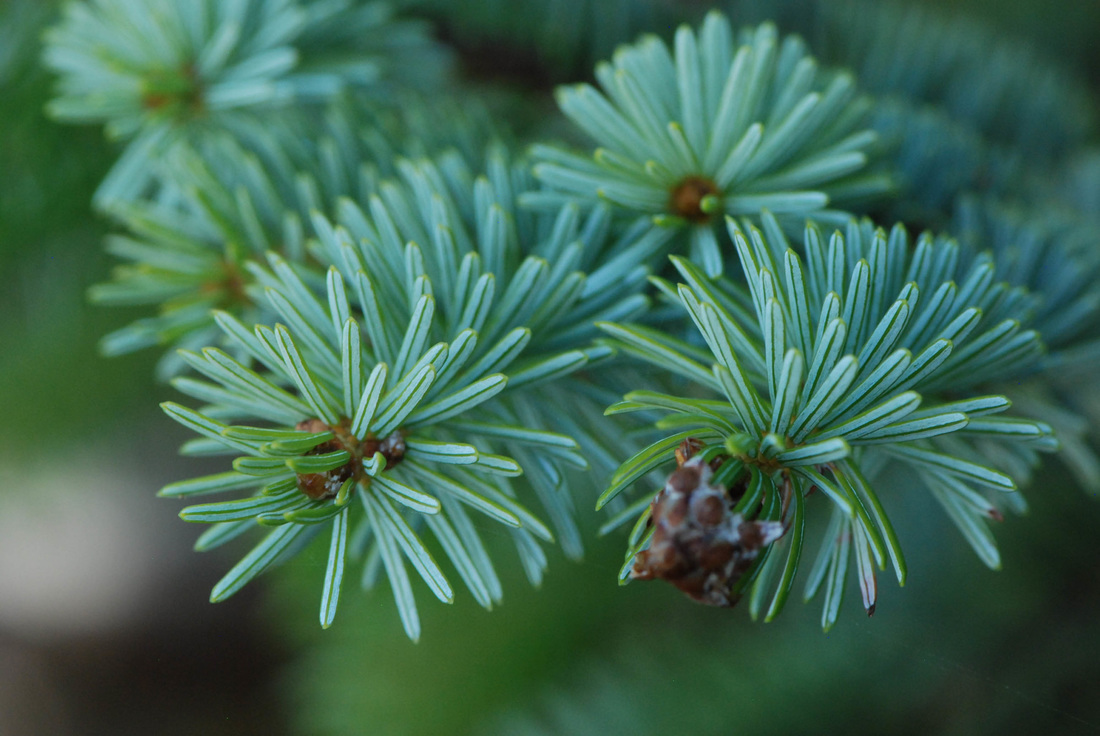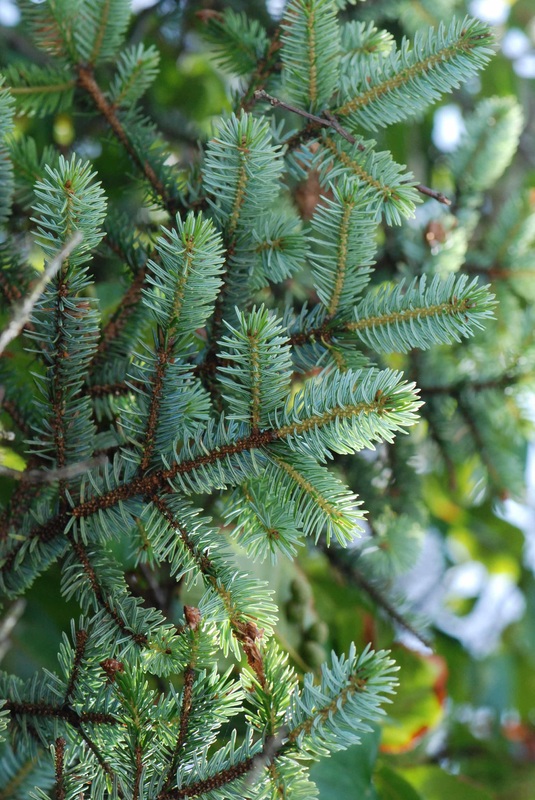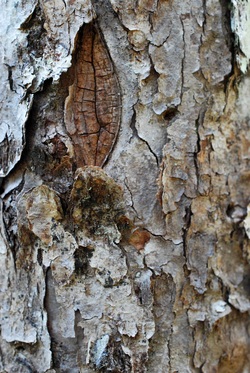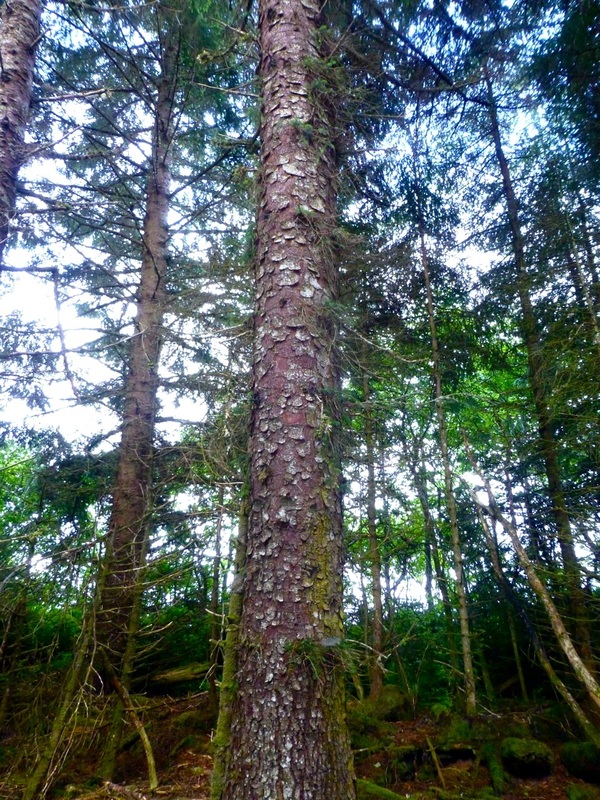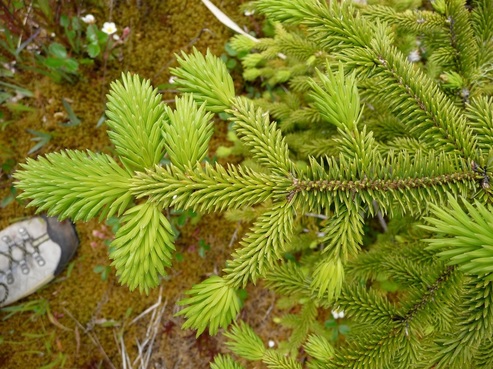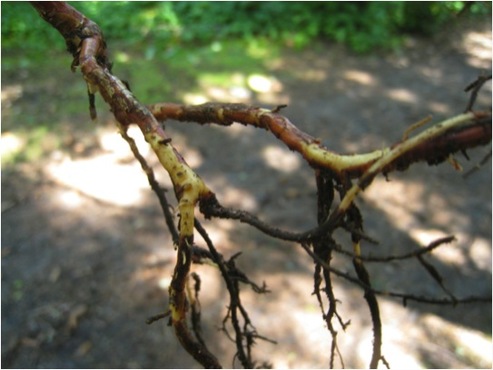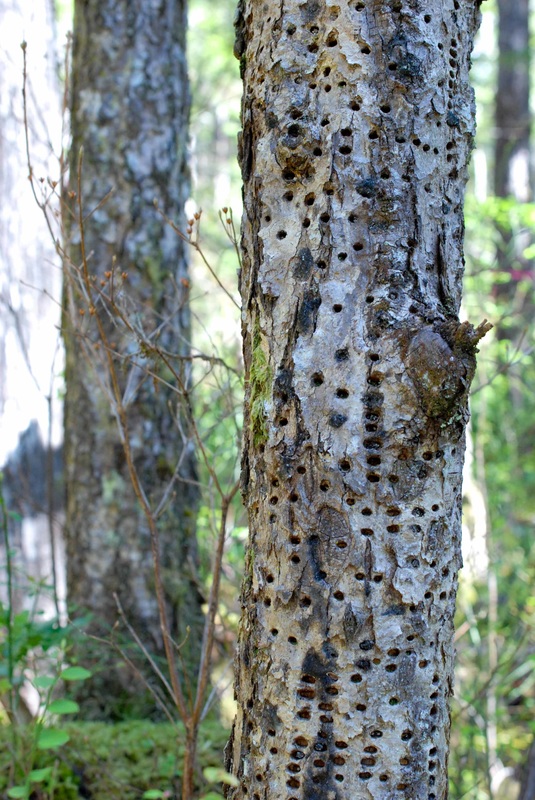Sitka spruce • Picea sitchensis
Heiltsuk/Haíɫzaqv - h̓ṇíw̓as • Nuxalk - macmikalhp
Identification
Sitka spruce is a common species along the Pacific Coast. It is a large tree, growing to 90 m tall with a diameter of up to 2 m. Its shape, bark, and needles are all distinguishing features. It is tall and slender, usually without many branches until partway up the tree. The branches extend outwards, with smaller branches drooping downwards. The trunk is covered in thin brown bark that peels away in small scales.The needles are green, 1-3cm (1/2 -1") long, and stiff. A good test to see if a tree is Sitka spruce is to grab a branch - if it hurts, it's likely Sitka spruce!
Habitat & Range
Sitka spruce is strongly associated with the coast, and often grows behind scrubby Sitka alders at the interface between beach and forest. Its range extends from Alaska to California. It is usually found in low to middle elevations, but can be found at higher elevations in Alaska and on Haida Gwaii.
Similar Species
Sitka spruce is similar to Engelmann spruce (Picea engelmannii), but this species does not usually occur at low elevations on the coast. Engelmann spruce has 4-angled needles that can be rolled between fingers, whereas Sitka spruce needles are slightly flattened. Sitka spruce hybridizes with white spruce (Picea glauca) in the interior, and some areas have trees that look like Sitka-Engelmann hybrids.
Human Uses
Sitka spruce has been used extensively by the Indigenous Peoples of the Pacific Northwest. The branches were used by the Ditidaht and Nuu-chah-nulth in winter dance ceremonies, and several peoples ate the inner bark. The pitch had several uses, from being chewed, used as a medicine for skin ailments and other health problems.
The roots were a basket-making material for the Haida, Tlingit, and other peoples. They created beautiful, water-tight baskets from the roots after they were cooked, peeled, and split.
iNaturalist
https://www.inaturalist.org/taxa/68131-Picea-sitchensis
Sitka spruce is a common species along the Pacific Coast. It is a large tree, growing to 90 m tall with a diameter of up to 2 m. Its shape, bark, and needles are all distinguishing features. It is tall and slender, usually without many branches until partway up the tree. The branches extend outwards, with smaller branches drooping downwards. The trunk is covered in thin brown bark that peels away in small scales.The needles are green, 1-3cm (1/2 -1") long, and stiff. A good test to see if a tree is Sitka spruce is to grab a branch - if it hurts, it's likely Sitka spruce!
Habitat & Range
Sitka spruce is strongly associated with the coast, and often grows behind scrubby Sitka alders at the interface between beach and forest. Its range extends from Alaska to California. It is usually found in low to middle elevations, but can be found at higher elevations in Alaska and on Haida Gwaii.
Similar Species
Sitka spruce is similar to Engelmann spruce (Picea engelmannii), but this species does not usually occur at low elevations on the coast. Engelmann spruce has 4-angled needles that can be rolled between fingers, whereas Sitka spruce needles are slightly flattened. Sitka spruce hybridizes with white spruce (Picea glauca) in the interior, and some areas have trees that look like Sitka-Engelmann hybrids.
Human Uses
Sitka spruce has been used extensively by the Indigenous Peoples of the Pacific Northwest. The branches were used by the Ditidaht and Nuu-chah-nulth in winter dance ceremonies, and several peoples ate the inner bark. The pitch had several uses, from being chewed, used as a medicine for skin ailments and other health problems.
The roots were a basket-making material for the Haida, Tlingit, and other peoples. They created beautiful, water-tight baskets from the roots after they were cooked, peeled, and split.
iNaturalist
https://www.inaturalist.org/taxa/68131-Picea-sitchensis
|
Top left: Sitka spruce branches with new growth at branch tips. Photo by Chanda Brietzke. Bottom left: Sitka spruce roots, which are used by some coastal First Nations in traditional basket making. Right: a Sitka spruce riddled with holes from woodpeckers.
|
References
Picea sitchensis (Bong.) Carriore. Sitka spruce. In Klinkenberg, Brian. (Ed.). E-Flora BC: Electronic Atlas of the Plants of British Columbia. Lab for Advanced Spatial Analysis, Department of Geography, University of British Columbia, Vancouver. Accessed on 30/03/2012.
Pojar, J. and MacKinnon, A. (2005). Plants of Coastal British Columbia, Revised. Vancouver, BC: Lone Pine Publishing. P. 37.
Authors and editors of page
Chanda Brietzke and Brian Starzomski (2013).
Picea sitchensis (Bong.) Carriore. Sitka spruce. In Klinkenberg, Brian. (Ed.). E-Flora BC: Electronic Atlas of the Plants of British Columbia. Lab for Advanced Spatial Analysis, Department of Geography, University of British Columbia, Vancouver. Accessed on 30/03/2012.
Pojar, J. and MacKinnon, A. (2005). Plants of Coastal British Columbia, Revised. Vancouver, BC: Lone Pine Publishing. P. 37.
Authors and editors of page
Chanda Brietzke and Brian Starzomski (2013).
